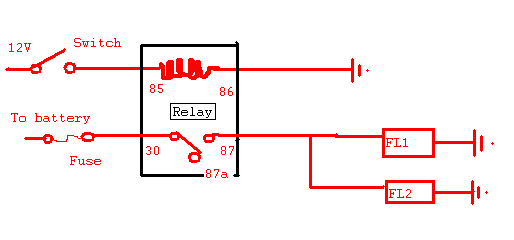Posted: May 08, 2007 at 10:53 PM / IP Logged
Posted: May 09, 2007 at 12:01 AM / IP Logged
Posted: May 09, 2007 at 5:58 AM / IP Logged
Posted: May 09, 2007 at 9:31 AM / IP Logged
Posted: May 09, 2007 at 9:45 AM / IP Logged
Posted: May 09, 2007 at 5:22 PM / IP Logged
Posted: May 10, 2007 at 3:43 AM / IP Logged
Posted: May 10, 2007 at 3:45 AM / IP Logged
Posted: May 10, 2007 at 9:14 AM / IP Logged
Posted: May 10, 2007 at 10:07 AM / IP Logged
Sorry, you can NOT post a reply.
This topic is closed.
 Printable version
Printable version


| You cannot post new topics in this forum You cannot reply to topics in this forum You cannot delete your posts in this forum You cannot edit your posts in this forum You cannot create polls in this forum You cannot vote in polls in this forum |

| Search the12volt.com |
Follow the12volt.com 
Tuesday, November 4, 2025 • Copyright © 1999-2025 the12volt.com, All Rights Reserved • Privacy Policy & Use of Cookies


Tuesday, November 4, 2025 • Copyright © 1999-2025 the12volt.com, All Rights Reserved • Privacy Policy & Use of Cookies
Disclaimer:
*All information on this site ( the12volt.com ) is provided "as is" without any warranty of any kind, either expressed or implied, including but not limited to fitness for a particular use. Any user assumes the entire risk as to the accuracy and use of this information. Please
verify all wire colors and diagrams before applying any information.












 A and C appear to be the two sides of the coil. You can check for a circuit using a multimeter (should be near infinite resistance between them). If they are there should be 12V live from the switch connected to one and earth to the other. Doesn't matter which.
E appears to be the common terminal and fused 12V from the battery should be connected here.
B and D then are the normally closed and normally open terminals. I can't tell from the diagram which is which. There should be a circuit between normally closed and the common terminal when no power is applied to the relay. When the coil is energised there will be a circuit between the common terminal and the normally open terminal.
A and C appear to be the two sides of the coil. You can check for a circuit using a multimeter (should be near infinite resistance between them). If they are there should be 12V live from the switch connected to one and earth to the other. Doesn't matter which.
E appears to be the common terminal and fused 12V from the battery should be connected here.
B and D then are the normally closed and normally open terminals. I can't tell from the diagram which is which. There should be a circuit between normally closed and the common terminal when no power is applied to the relay. When the coil is energised there will be a circuit between the common terminal and the normally open terminal.

